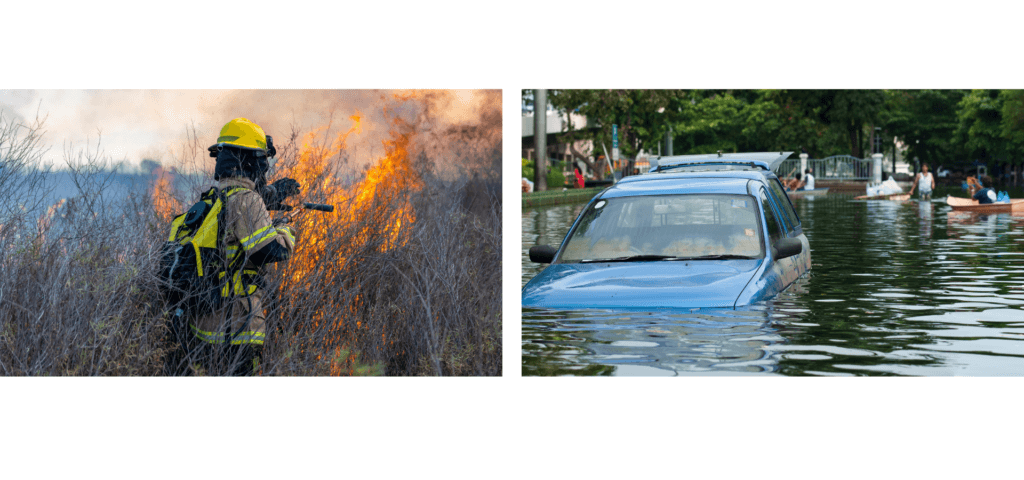
Europe's commitment to renewable energy in the face of climate change
Climate change is happening right before our eyes and presenting new challenges for the world. European communities are grappling with increasingly frequent and intense extreme weather events that have profound impacts and demand our attention. The consequences are severe, from urban areas transformed into fiery landscapes during sweltering heat to towns inundated by floods.
The root cause of the climate crisis is our heavy reliance on fossil fuels. Burning these fuels releases greenhouse gases into the atmosphere, trapping heat and warming the planet. This disturbs the delicate balance of our climate system and intensifies the occurrence of extreme weather events. To face this crisis, we need to move towards a cleaner future with renewable energy sources such as solar and wind power. In addition to reducing our dependence on fossil fuels, renewable energy is essential for strengthening community resilience. This aligns with the European Union’s Green Deal, which outlines a comprehensive set of policies aimed to achieve a carbon-neutral economy by 2050.

European summer of extremes
This summer, Europe experienced a series of record heatwaves and devastating wildfires that have swept across the continent. The European Forest Fire Information System reports that up to 41% of the area burned in the EU is in Natura 2000 protected sites. In 2023 alone, wildfires have released more than 20 million tonnes of carbon dioxide into the atmosphere, exceeding the European average over the last two decades.
The Mediterranean region was hit hardest by this year's heat waves. The streets in Greece's ancient port town of Gytheio shimmered as temperatures climbed to an astonishing 46.4 degrees Celsius, setting a new record since record-keeping began in 2006. Life stood still in the sweltering heat, and the streets remained deserted. The heatwave also triggered a wave of wildfires that ravaged the countryside. Nearly 20,000 tourists abandoned Rhodes hotels due to the threat of wildfires, marking the largest evacuation of its kind in the country's history. The intensity of the heatwave caused widespread power outages and plunged towns into darkness. Hospitals struggled to maintain patient care, and businesses were forced to shut their doors.
In May 2023, Italy found itself in the grip of unforgiving weather. The tranquil rivers of Tuscany turned into raging torrents that surged through towns and villages, leaving destruction in their wake. Homes vanished beneath the rising waters, and critical infrastructure crumbled under the weight of the deluge. The downpours lasted 80 hours of relentless rainfall over six days, causing flooding and infrastructure collapse, leaving the affected areas in darkness. Over 20,000 citizens were forced to evacuate and seek refuge in temporary shelters such as schools, sports halls, and gyms.
Not only floods but also severe storms with strong winds are becoming a pressing concern in Europe. This year, Norway faced several relentless storms marked by a historic amount of rainfall. The Norwegian meteorological institute reported extremely heavy rainfall in parts of Norway, marking the strongest in the last 25 years. As winds and heavy rain swept across the region, trees were uprooted, flights faced delays, ferries stopped running, and power lines scummed to disruption. In cities like Oslo, people were urged to work from home. Meanwhile, in the small village of Bagn, nested in the heart of a valley surrounded by forests, landslides wreaked havoc, severing its residents from the outside world.
Researchers at Newcastle University predict extreme weather events will become more frequent due to the climate crisis. "Alongside drastically cutting emissions, countries must build more resilient infrastructure," the researchers said.

Renewable energy and climate resilience
In the face of a changing climate, Europe is at a crossroads. Floods, wildfires, and storms dominate the headlines. As extreme weather events become more frequent, the transition to renewable energy is necessary. The European Union recognises this need and has adopted bold initiatives such as the European Green Deal, a comprehensive roadmap to reach climate neutrality by 2050. Central to this strategy is the Fit for 55 initiative, which aims to reduce greenhouse gas emissions by at least 55% by 2030. Additionally, the RePower EU plan aims to decrease the dependency of the European Union on Russian fossil fuels and promote green energy.
These initiatives address the challenges highlighted by the extreme weather events. By transitioning to renewable energy, Europe reduces its dependence on fossil fuels and mitigates the effects of climate change. Renewable energy, coupled with energy storage systems, can enhance communities' resilience and help them withstand increasingly severe weather events. Renewable energy ensures a reliable electricity supply amid widespread damage from floods, provides backup power to fire stations during wildfires, and restores power to villages cut off during severe storms. As Europe navigates through new climate challenges, transitioning to clean energy becomes a vital tool to help us ensure a safer and more sustainable future in the face of these extreme weather events.
Want to know more about CBI’s work to achieve a carbon neutral economy in Europe? Subscribe to our newsletter here.